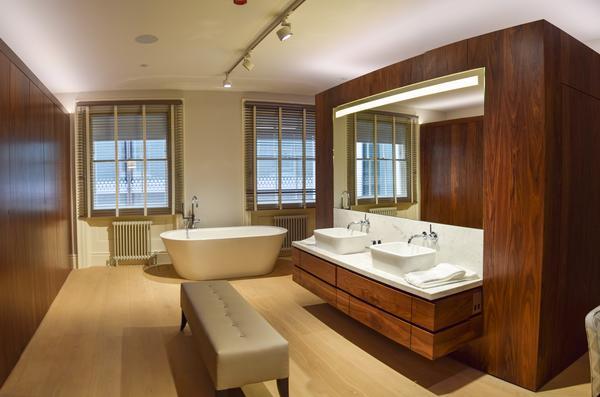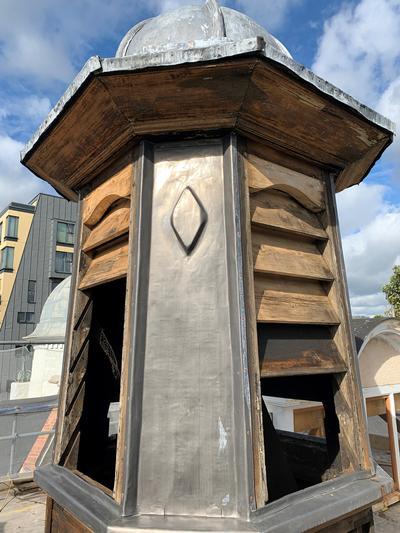Giving heritage properties a contemporary edge without losing their integrity
Updating heritage buildings to create a legacy for the future is about much more than protecting our history and the aesthetics of traditional architecture. Heritage refurbishment also delivers sustainability goals for reducing waste and extending the service life of existing property assets. The Royal Institution of Chartered Surveyors (RICS) estimates that 35% of the lifecycle carbon from a typical new build office development is emitted before the building is even opened, and that figure rises to 51% for residential properties. Consequently, transforming existing assets preserves both our built and natural environments.
The challenge is that most older properties were not constructed for 21st Century tastes and lifestyles. If they are to be practical, sustainable, attractive buildings for the modern era, there is a delicate balance to be struck between conservation and upgrading, balancing preservation with innovation. Respecting the quality and history of a heritage property doesn't necessarily mean turning back the clock to bygone tastes or rolling back standards of comfort and technology a hundred years or more. For many buildings, sympathetic refurbishment means keeping the character and structural integrity of the existing building, while updating it for a new generation of use with a new generation of construction materials, techniques and technologies.
At Chisholm & Winch, our goal is to balance respect for the past with a clear understanding of what is needed to protect a heritage property for the future and make it appealing for today's occupiers. Whether working on a residential property or a commercial building, those goals must be central to how we approach buildability choices and specification.
Residential refurb
What people want and expect in a home – especially at the luxury end of the market – has changed dramatically over the past century. Lifestyles have changed too, so the facilities occupiers expect, and the ease of maintenance they need, are a far cry from the way our ancestors lived.
A good example of a project that has combined traditional conservation with contemporary upgrades as is 1-2 New Burlington Street. Located just off Regent Street, between Mayfair and St James's, 1-2 New Burlington Street is a five-storey Regency house that has undergone a major conservation and refurbishment project to provide luxurious private rental accommodation. Our remit was a varied package of works, which involved updating the accommodation to provide chic interiors and contemporary facilities, while restoring original features.
Some of the rooms within the building have original Georgian timber panelling and our remit included refurbishing these walls, matching new timber panelling to the original where replacement was required, and restoring those areas that could be preserved.

One of the showpiece elements of the project was a new staircase that curls through the centre of the property. Here, new balustrades and bannisters in-keeping with the period of the building were installed to create a feature that does not pretend to be original but instantly references the period of the original build and appears at home in its surroundings.
Oak floors throughout the building marry traditional materials with contemporary tastes, and bespoke joinery across the luxury kitchen, custom-fitted wardrobes, spacious wine cellar and heritage doors echoes the workmanship of the original building while updating it with contemporary style.
Installation of veneered bathroom pods within the existing structure give the bathrooms a contemporary twist. The concept there was to retain the integrity of the original building fabric while creating the luxury feel of a contemporary five-star hotel bathroom. To achieve this, freestanding vanity units were installed to deliver a solution that is both modern and practical. The unit acts as a room divider and, while its contemporary design juxtaposes with the heritage surroundings, its materiality connects it to the existing building.
Meanwhile, a free-standing bath avoids any plumbing in the walls and continues the contemporary theme while also evoking a sense of the free-standing bathing of times gone by.

Commercial upgrades
There are many high street buildings that are no longer suited to their original purpose but have architectural value. These properties have the potential to be given a new lease of life in a way that will help to reinvent urban centres and reinvigorate communities. With the downturn in high street retail, there is an urgent need for innovative thinking in these environments.
A current Chisholm & Winch project is a good example. Combining conservation of a derelict former temperance hall with a new build extension, the project is turning a piece of Lewisham's history into a new community hub for the Tab Church.
The building has already undergone several reinventions during its lifetime. A tea hall in the 1920s and a snooker hall for several years, it had been left to decay for the past four decades before The Tab took it on. With water seeping through the roof, some of the structure was compromised so the task of refurbishment has involved making-good the original structure, modifying the building for a new purpose and preserving features that connect the property's history with its future.

The new build elements will bring contemporary community spaces and office areas to the site and much of the refurb will also deliver contemporary facilities and aesthetics. When finished, the main hall will include a state-of-the-art auditorium with a dramatic, walk-in baptism pool, a new mezzanine level and underfloor heating.
The new additions are being delivered with respect for the original building, however. For example, bespoke steelwork makes the Grade II listed building more structurally robust, while providing a feature that is in-keeping with the early 20th Century building. A rooflight installed at the apex of the restored roof's pitch will allow natural light to flood the previously gloomy space, using a contemporary feature to showcase the craftsmanship of the original building. And of course, restoring original features and carefully selecting materials to connect old and new is integral to the aims of a project like this, so the roof has been stripped and re-built. New trusses and insulation have been installed to ensure the building is robust and delivers 21st Century thermal performance, while the old trusses have been restored and reinstated as a decorative feature and the original slates have been re-used wherever possible.

Due to the dilapidated state of the building when the project commenced, the commitment of both the client and Chisholm & Winch to retaining the building's authenticity has involved pragmatism from the construction team. For example, in order to preserve an original scroll detail, a gable wall was moved back one gridline into the footprint of the building to enable construction of a new brickslip external wall while retaining the feature. Decisions like this may add layers of complexity to the build but they also ensure that upgrading the heritage building adds to its legacy, without detracting from it.
Collaboration supports success
At every stage, collaboration between the client, the designer and the construction contractor ensures that decisions made during the refurbishment of a heritage building capitalise on opportunities to both preserve and improve the property, while tailoring the accommodation to its contemporary use. Whether the building is residential or commercial, heritage refurbishment is not about creating museum pieces, but about delivering our future built environment without destroying our past.
This article originally appeared in AT Journal - issue 140
